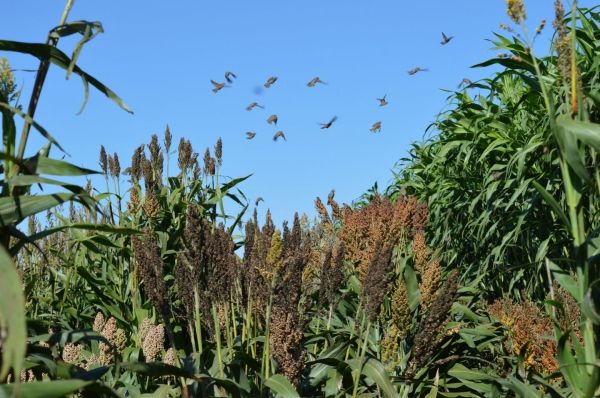A new study that examines the genetics behind the bitter taste of some sorghum plants and one of Africa’s most reviled bird species illustrates how human genetics, crops and the environment influence one another in the process of plant domestication.
The study untangles these factors to create a more complete look at crop domestication than is possible in other major crops, said Xianran Li, an adjunct associate professor in the Iowa State University Department of Agronomy and corresponding author of the paper. The study, published recently in the scientific journal Nature Plants, looked at how human genetics, and the presence of bird species with a taste for sorghum seeds might have influenced the traits farmers in Africa selected in their crops over thousands of years. The unique geographic distribution in Africa of sorghum plants that contain condensed tannins, or biomolecules that often induce a bitter taste, provided one side of a “domestication triangle” that helped the researchers piece together the domestication puzzle, Li said.
“It’s a systematic view that gives us a full picture of domestication,” he said. “Looking at just one component only tells us part of the story.”
Sorghum is a cereal crop first domesticated in Africa that remains a staple food throughout the continent. The researchers noted that sorghum varieties with high levels of tannins commonly grow in eastern and southern Africa, while western African farmers tend to prefer varieties with low tannin content. In contrast, domestication processes in other continents removed condensed tannins from most other cereal crops, such as wheat, rice and corn, due to the bitter taste they produce.
Read more at Iowa State University
Image: Sorghum panicles with non-tannin grains were devoured by the sparrows, leaving only the dark-colored glumes, while panicles with tannin grains were left alone. (Credit: Xianran Li and Jianming Yu)


